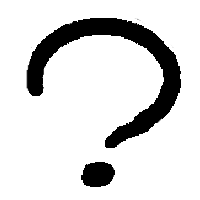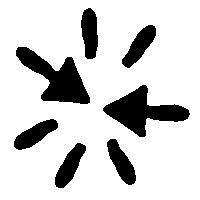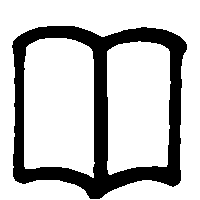On Familiar Unfamiliar
Leo Horton
Leo Horton
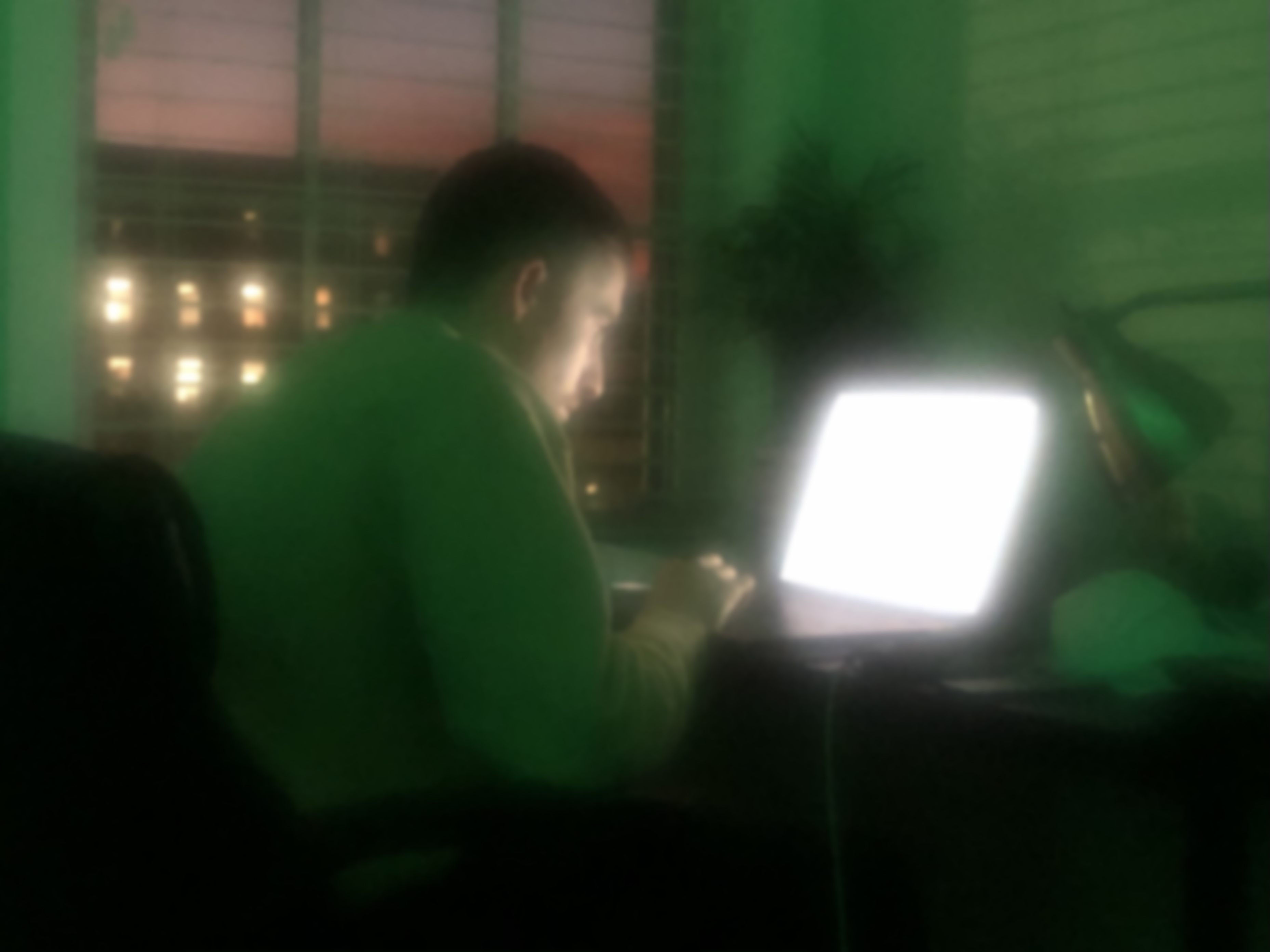
Fred on Computer
I. Introduction
I like to think the majority of my photography is in pursuit of a single sensation. One that is rendered between the eye and the mind and belongs primarily to the evocation of a blurry feeling - a familiar unfamiliar. This is a tough feeling to grab a tight hold of, as it is two conflicting senses in communion, but I am certain you know it. It is not a great feeling, in fact it is often confusing or uncomfortable, but that is its purpose and its strength.

Ariel’s Room
A picture is a container for recognition. Recognition is unconsciously measured in familiarity. Familiarity, like beauty, is in the eye of the beholder. Unlike beauty, which traps eyes, familiarity tends to be slippery to them. That which is overtly familiar (mundane) tends to repel a close look and, as a result, easily slips from record. Morning commutes, average meals, a night’s sleep or a trip to the bathroom; these things are too unremarkable to be really looked at, let alone memorized or documented. As a result truly familiar things tend to be absent from record.
Everything that isn’t familiar is unfamiliar. the unfamiliar attracts the eye with good reason; it requires a closer examination in order to make sense of and eventually recognize. I want my photos to be unfamiliar and my subjects to be familiar. I blur them to bits with my breath and allow them to be visually unclear. Accross my whole work the treatments, compositions and styles may be unusual, but the scenes can’t help but be eerily recognized.
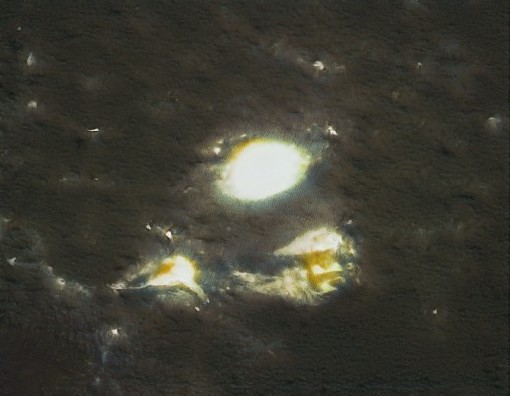
Untitled, Generated Image (2020)
---
II. Audience
As an artist, I have a great anxiety for all that I fail to see. This may not seem relevant, but growing up on the marshy lowcountry in South Carolina I was always obsessed with storms. Summer would arrive and hurricane season would begin as storms birthed across the ocean migrated many thousands of miles to pummel the Atlantic shoreline with fury. We would watch the news religiously anticipating where it would strike land, tracking this spiral of distilled power in it’s unclear path. I never evacuated for a hurricane. In fact I felt no greater elation than when one finally arrived and the sea surged into my neighborhood. The flood was the greatest high I have ever felt, for everything I thought was familiar was now cast in an incomprehensible treatment. In that quick disaster the world was new, my eyes were pried open and I truly noticed everything. Images from that day, which I failed to take, are fully clear in my mind. All my pictures are taken in opposition to comfortably forgetting, and I cloud them with respect to a good storm. In truth I make them all for me.
The photographer’s role, in my case, is to resist the veiling curtain of familiarity. The viewer’s role, in this case, is to be receptive to the unfamiliar. If you’re not me and are here to view these images I’m sure you might find some relevance.
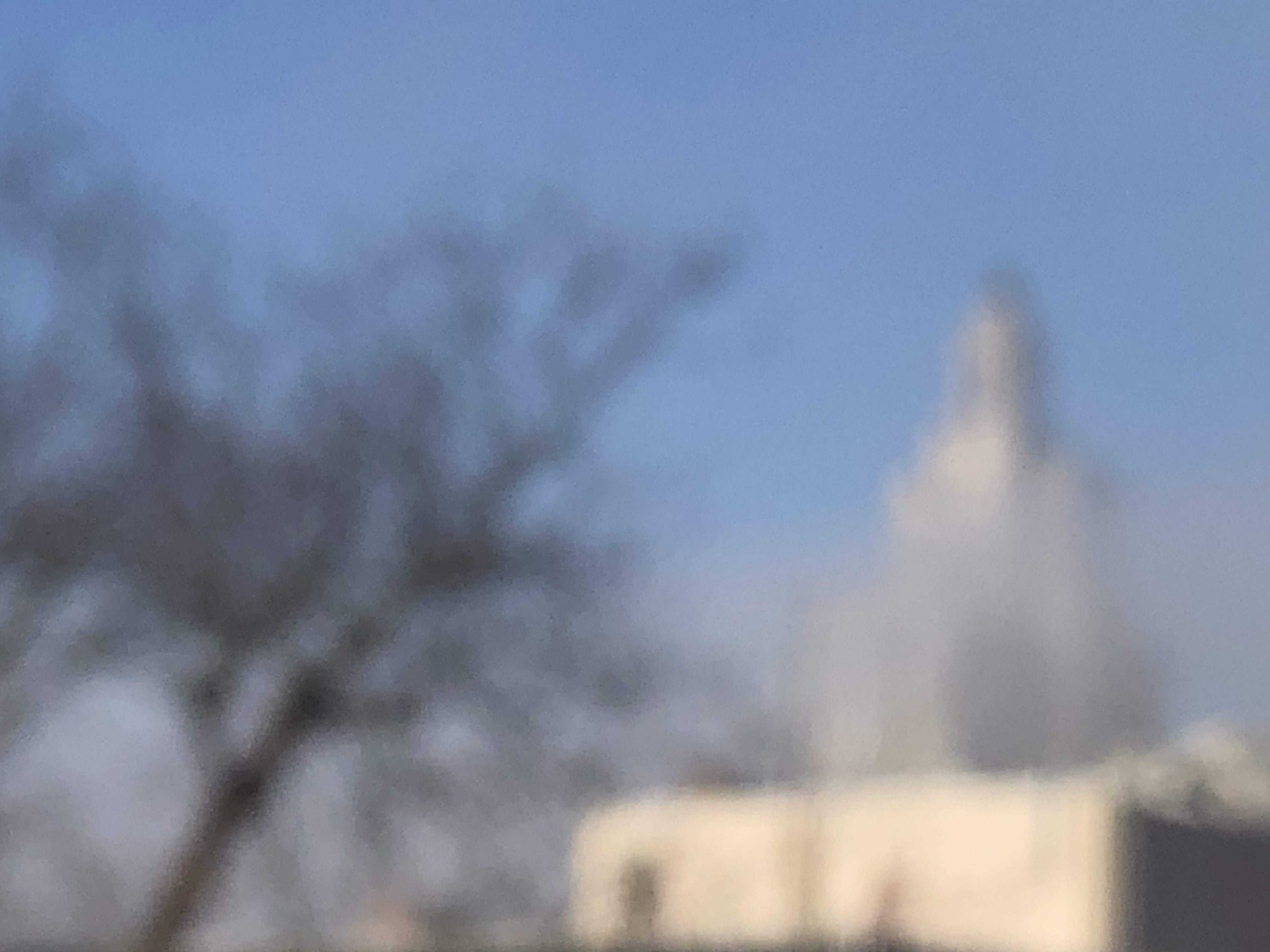
Providence Skyline

Branch and Storm

Bridge and Smokestacks
---
III. Conversation
I would like to share a conversation I had on my work with another incredibly talented artist, Nitya Mehrotra, in late January, 2020 as a way of framing my output recently:
I would like to share a conversation I had on my work with another incredibly talented artist, Nitya Mehrotra, in late January, 2020 as a way of framing my output recently:
Nitya: I find your focus on a single source of lighting amazingly weird. These images have a lot of nostalgic power and relatability for most of the people around the world, especially now during the pandemic. Your photo language of the ‘fuzziness’ goes extremely well with the idea of an all-nighter for last-minute paper submission. I wonder how you use the ‘single source of light’ language with different mediums other than laptops?
Leo: Oh man this is a weird question. Now that you mention it, I think I do tend to place a single visible light source in a lot of my work. Generally, I’m always pretty conscious of where the sun is in a scene and I’m always watching the weather and observing the sky in my day to day. If we were to draw similarities between these photographs and my other work, the laptops in these images can maybe be viewed as a stand-in for the bright, mega-luminous sun that often pops up as a symbol of continuity and worship in my other stuff. I also am really into the idea of something being just visually bright - a glowing rectangle superimposed over some environment. Something that is glowing never fails to catch my eye, I even kind of have an archive called We Love Glowing about just that.
Nitya: you not only capture the pseudo sun but also understand light in the night. I wonder if there is a way for you to isolate light outside of your rooms and controlled environments. I know of a friend who would capture every ant he would see as he took a journey around the world. He didn’t actually find ants everywhere but would search for things that look like ants; other insects, spots on the streets, food stains on clothes, and even tiny leaves. Searching for the same thing in a world without it can be something that we all think about as artists. ‘Looking for familiarity’ could be a way of looking at your search for the sun in the night.
Leo: I think that’s certainly a brilliant idea - the search for a specific type of vague familiarity in the world. I tend to get overwhelmed talking about these things because I often feel like we lack the language to really pin down ideas of familiarity and recognition, which is such a both visual and personal affair. With that said I do think that it is the backbone behind any image-making practice.
There is definitely something incredibly valuable (and undeniably human) in your friends' search for ants in stains and spots that I’d like to think is synchronous with what I try to do. I think the ritual of photographs is kind of that small act of recognition magnified into a single object - we are struck with some flat representation that we can’t help but recognize (sometimes falsely - like a leaf that only resembles an ant). Time, place, subject and imagery is all clouded in order to make sense. The photographs themselves are just flat scenes, dots of light, but they hold so much weight and power because we have no choice but to recognize some fact of the world in them.
In contrast to photography, I play a lot with AI-generated images and always get some strange discomfort looking at pictures I can’t quite recognize. It is a weird thing to mess around with and leaves you with an uneasy sense of something we don’t really have language for. Not sure if that is quite relevant but it kind of helps define the opposite end of the loose recognition spectrum.

Grady’s Room

Angie’s Room

American Landscape
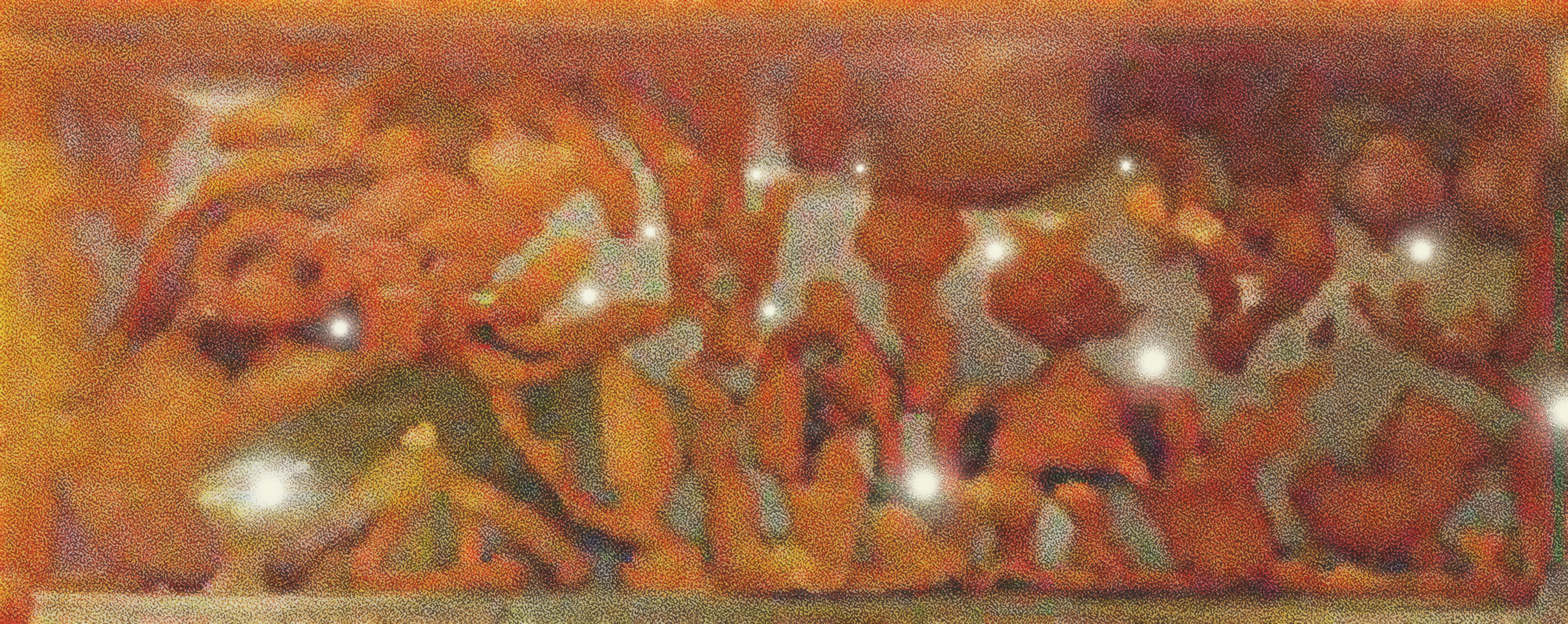
Untitled, Generated Image (2020)
Nitya: I find your approach to discomforting photography very interesting. The recent revelation
in technology brought forth the ‘uselessness’ of labor. The idea that was highlighted in some
recent articles I read, was about the ‘humanness’ that we use as our strength while making art is
derived from our emotional capabilities against that of an AI. Being able to look at an AIgenerated image and feeling discomfort also comes from a rivalry instinct of it not being
‘authentically human’. I like thinking about this topic since it takes place in the realm of
photography because of digitization; there are no more humans needed behind a camera to
capture a moment. The idea of control gets lost somewhere, which is what I think about when
you mention your work with AI. how much do we control in that art? I think about my work
where I have to set up these conversations with subjects in order to get photography where there
is a level of staging involved. The staging and conversations are what makes the photography
‘me’ and then the camera captures it. This conversation about technology might be redundant
because of our impending technological boom, but I would like to believe that I want to make it
a part of my art.
Leo: Ah same here, I don’t think it's too redundant though. New tech has shaped how we approach images greatly. We absorb so many, take so many, redefine and recreate. It’s hard to avoid how it influences our image making practices.
As for control, it is a dimension I’ve never really thought of outside of drawing and painting (where I am incredibly conscious of how much control I have). In truth I’m not a fan of staging or setting up my own photographs, but it certainly creates its own air and breeds a sense of true decision making. I guess I am in love with the passive, seemingly-neutral expression of AI and surveillance tech where it simply is brought into existence and by chance captures - like incredible fossils preserving a moment out of millions by mere chance. I suppose a lot of my artwork takes a neutral stance and is more observational then expressive, so it might tend to forego, or warp, a general air of emotional me-ness for a more scrutinizing cloudy and confused me-ness.
Nitya: The idea of the mundane is very provocative, I think. To be able to look at the thing we experience every day and putting a unique lens on it, tends to be a provocative activity for me. I have been impressed by how you do that. The toilet is no more a toilet. You obscure the image in a way that a person from a rural world without the knowledge of western washrooms may not even recognize this picture. I remember someone talking about associating faces to things in your crit and I find that interesting here!
Leo: Yes! I’m definitely into capturing and showing super mundane things (though I still consider them valuable moments in a way). A lot of my life especially at the moment just seems so routine, so I tend to hesitate to go out of my way to capture something firmly outside of my lived experience. I look at the toilet a good number of times throughout my day, many more in a week, and they all blur in the order of months. Same goes for my bed, my window, my computer. I feel like we don’t even really look at these things at that point, but the things we don’t look at by extension are also those we look at the most and define our time the most. They become the most essential in their mundane, blurriness. I think obscuring them lends to this idea to an extent?
Nitya: I wonder about the different aesthetics of the same scene. Is it solely one of the cultural/economic/ social factors that make these specific changes in a photograph? I can’t seem to get the perspective of the camera out of my head when I think about a ‘set’. The difference between my bedroom in RISD and in India is very different, even though both are mine. How would one choose to show the difference between them? The embracement of the mundane, as we mentioned above, is only a part of how documentary photography might function in such situations. Choosing what to show comes with the question of justice; justice to the subject/ culture/ life. If you were to photograph a bedroom that was not your own, how would you make the decision of what deserves to be captured? Is it about unfamiliarity then? The opposite of which we discussed in the conversation at the top? Would you choose to show that which is unfamiliar to you or fascinates you?
Leo: I’ve actually taken a few photos of bedrooms; in truth I don’t think anything by default really deserves to be captured when producing images of this variety - there is something both to say and value about privacy in one’s home but also to what extent you want to express the individuality of the subject. Sometimes it is necessary to show the minutiae of their lives to express a full picture, but I prefer to do otherwise: Defamiliarize people and objects to the point they are only figures in a space. The unfamiliar likewise is fascinating, so I guess I tend to lean towards that.
I’m also reminded of how the iconicity of some photos rests on their ability to be blanket statements and avoid the heavy contextualization of too much detail and too much clarity. Some photos - like my series of people looking at computers - robs the subjects of their individuality by blurring their surroundings and showing very little outside of space, general environment, clutter and screen. I’d hope to make others in the future do the opposite, though I’m not too big a fan of narrative or character building so tend to stray away from detail.
Nitya: Thank you for all your thoughtful comments which has given me a much deeper insight into not only your work method but also these vivid concepts around photography!! Keep well!
Leo: Ah same here, I don’t think it's too redundant though. New tech has shaped how we approach images greatly. We absorb so many, take so many, redefine and recreate. It’s hard to avoid how it influences our image making practices.
As for control, it is a dimension I’ve never really thought of outside of drawing and painting (where I am incredibly conscious of how much control I have). In truth I’m not a fan of staging or setting up my own photographs, but it certainly creates its own air and breeds a sense of true decision making. I guess I am in love with the passive, seemingly-neutral expression of AI and surveillance tech where it simply is brought into existence and by chance captures - like incredible fossils preserving a moment out of millions by mere chance. I suppose a lot of my artwork takes a neutral stance and is more observational then expressive, so it might tend to forego, or warp, a general air of emotional me-ness for a more scrutinizing cloudy and confused me-ness.
Nitya: The idea of the mundane is very provocative, I think. To be able to look at the thing we experience every day and putting a unique lens on it, tends to be a provocative activity for me. I have been impressed by how you do that. The toilet is no more a toilet. You obscure the image in a way that a person from a rural world without the knowledge of western washrooms may not even recognize this picture. I remember someone talking about associating faces to things in your crit and I find that interesting here!
Leo: Yes! I’m definitely into capturing and showing super mundane things (though I still consider them valuable moments in a way). A lot of my life especially at the moment just seems so routine, so I tend to hesitate to go out of my way to capture something firmly outside of my lived experience. I look at the toilet a good number of times throughout my day, many more in a week, and they all blur in the order of months. Same goes for my bed, my window, my computer. I feel like we don’t even really look at these things at that point, but the things we don’t look at by extension are also those we look at the most and define our time the most. They become the most essential in their mundane, blurriness. I think obscuring them lends to this idea to an extent?
Nitya: I wonder about the different aesthetics of the same scene. Is it solely one of the cultural/economic/ social factors that make these specific changes in a photograph? I can’t seem to get the perspective of the camera out of my head when I think about a ‘set’. The difference between my bedroom in RISD and in India is very different, even though both are mine. How would one choose to show the difference between them? The embracement of the mundane, as we mentioned above, is only a part of how documentary photography might function in such situations. Choosing what to show comes with the question of justice; justice to the subject/ culture/ life. If you were to photograph a bedroom that was not your own, how would you make the decision of what deserves to be captured? Is it about unfamiliarity then? The opposite of which we discussed in the conversation at the top? Would you choose to show that which is unfamiliar to you or fascinates you?
Leo: I’ve actually taken a few photos of bedrooms; in truth I don’t think anything by default really deserves to be captured when producing images of this variety - there is something both to say and value about privacy in one’s home but also to what extent you want to express the individuality of the subject. Sometimes it is necessary to show the minutiae of their lives to express a full picture, but I prefer to do otherwise: Defamiliarize people and objects to the point they are only figures in a space. The unfamiliar likewise is fascinating, so I guess I tend to lean towards that.
I’m also reminded of how the iconicity of some photos rests on their ability to be blanket statements and avoid the heavy contextualization of too much detail and too much clarity. Some photos - like my series of people looking at computers - robs the subjects of their individuality by blurring their surroundings and showing very little outside of space, general environment, clutter and screen. I’d hope to make others in the future do the opposite, though I’m not too big a fan of narrative or character building so tend to stray away from detail.
Nitya: Thank you for all your thoughtful comments which has given me a much deeper insight into not only your work method but also these vivid concepts around photography!! Keep well!

Ariel’s Computer

River Scene
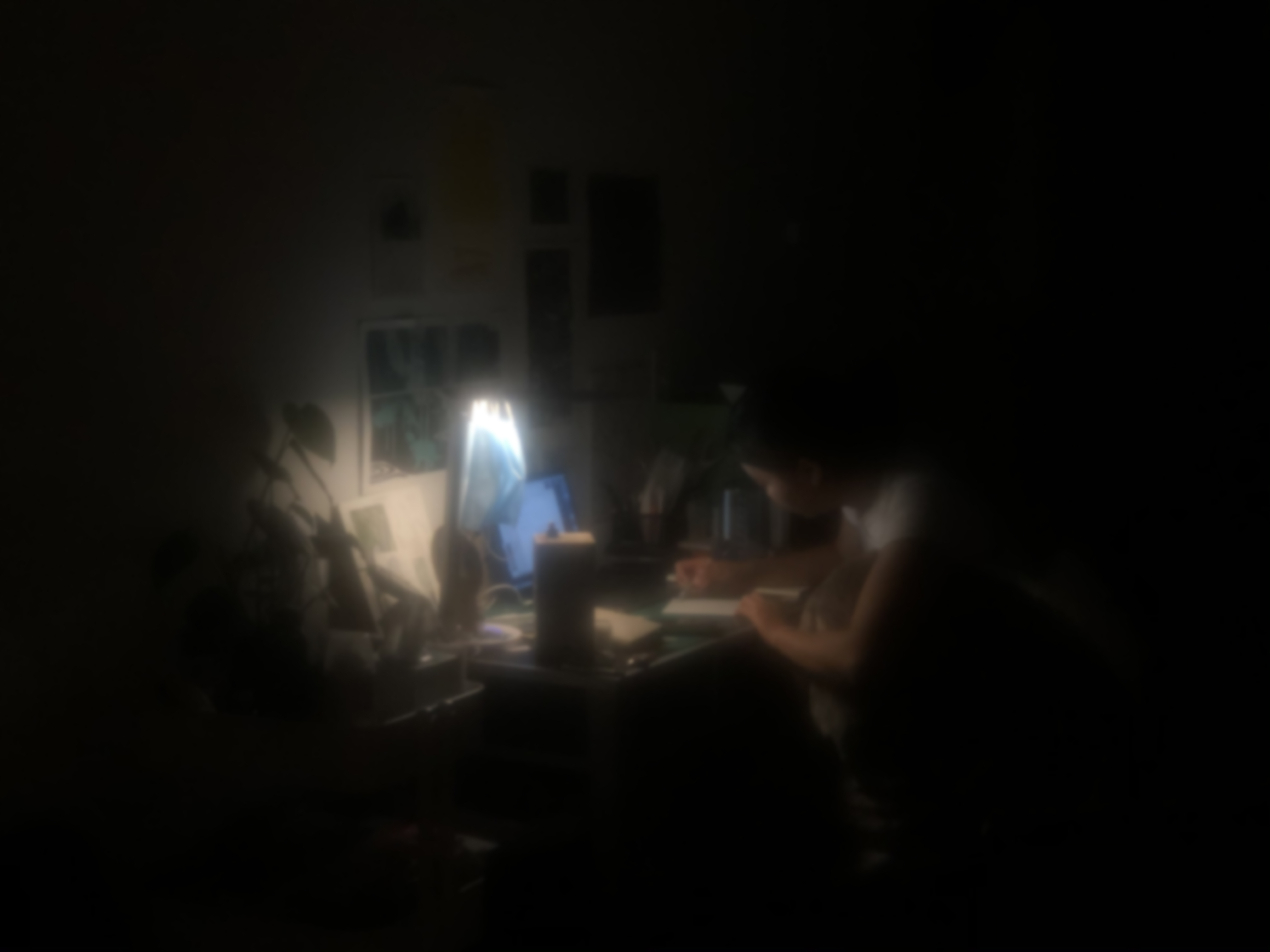
Angie’s Room II
---
IV. Gallery

Park Scene
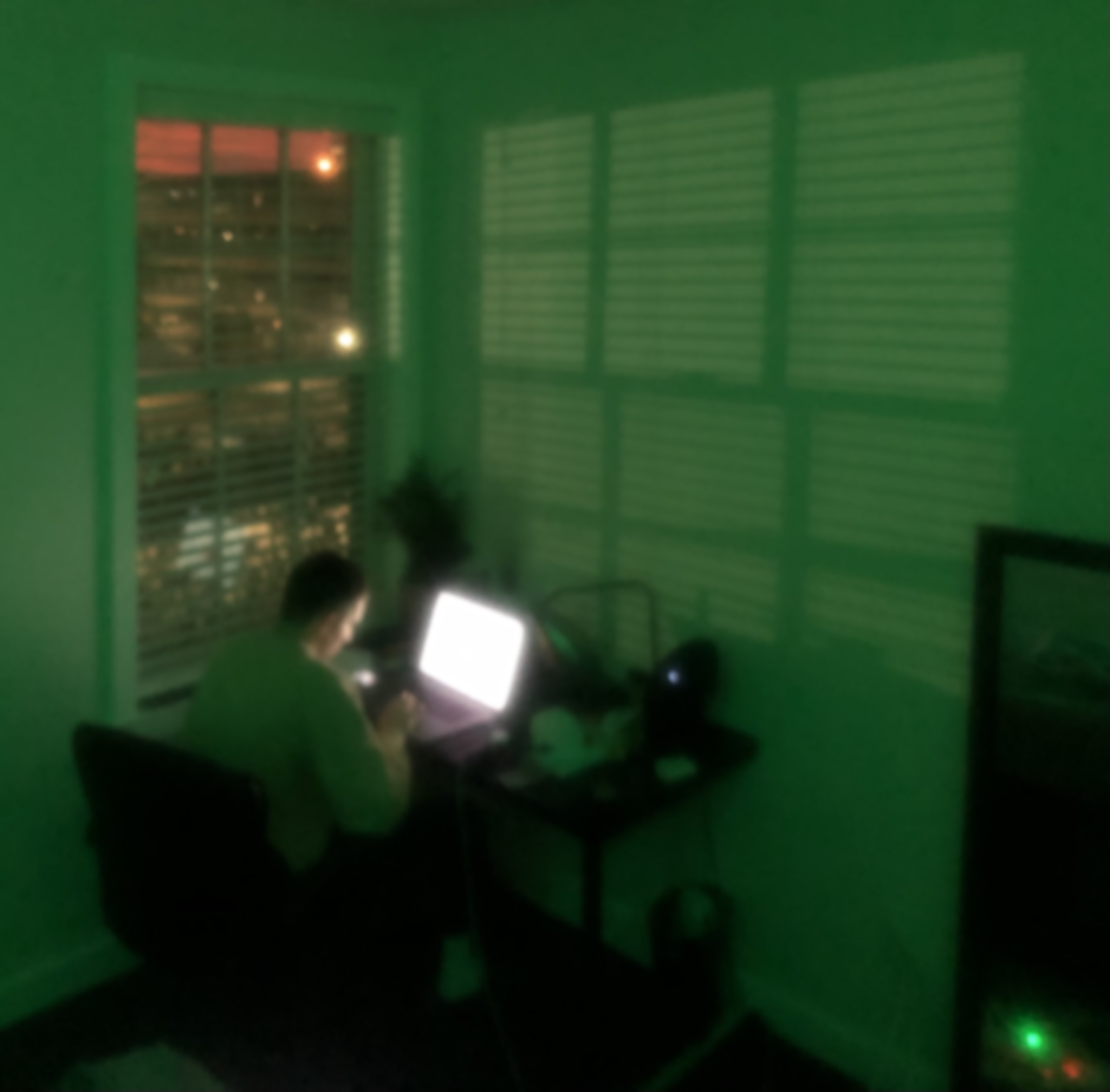
Fred on Computer II
Empty Box
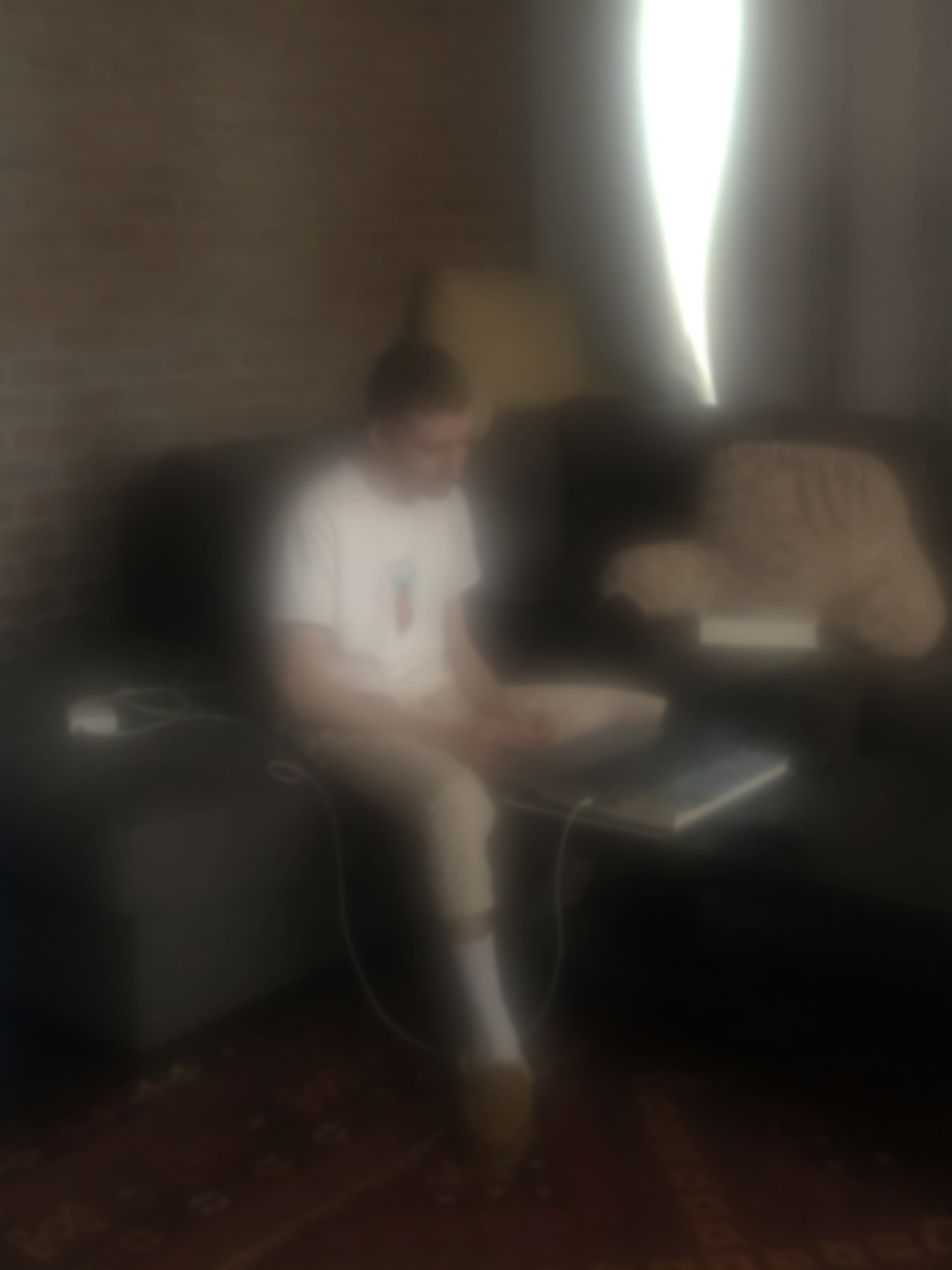

Fred Diptych II
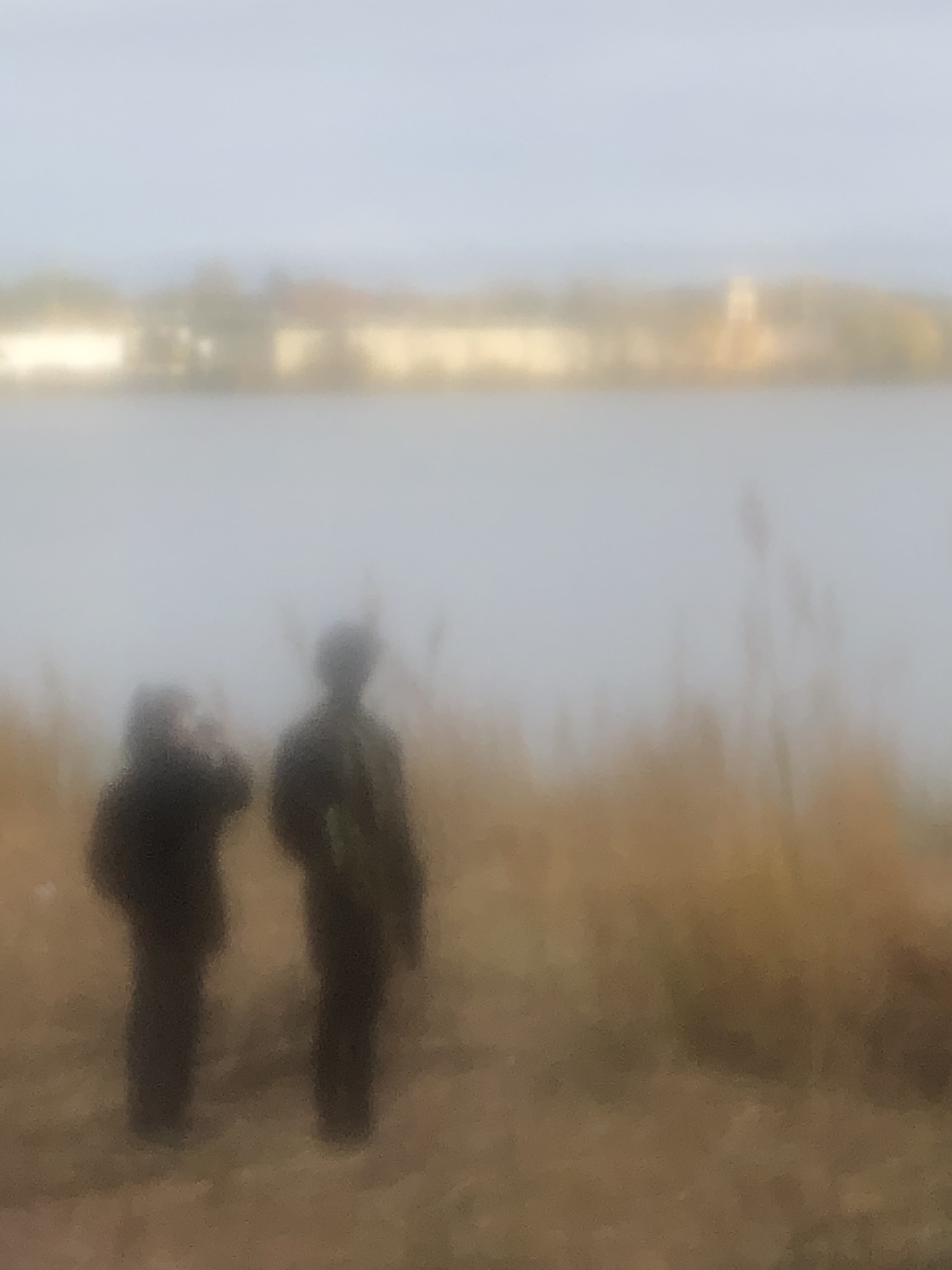
Figures at Riverside

Street Scene
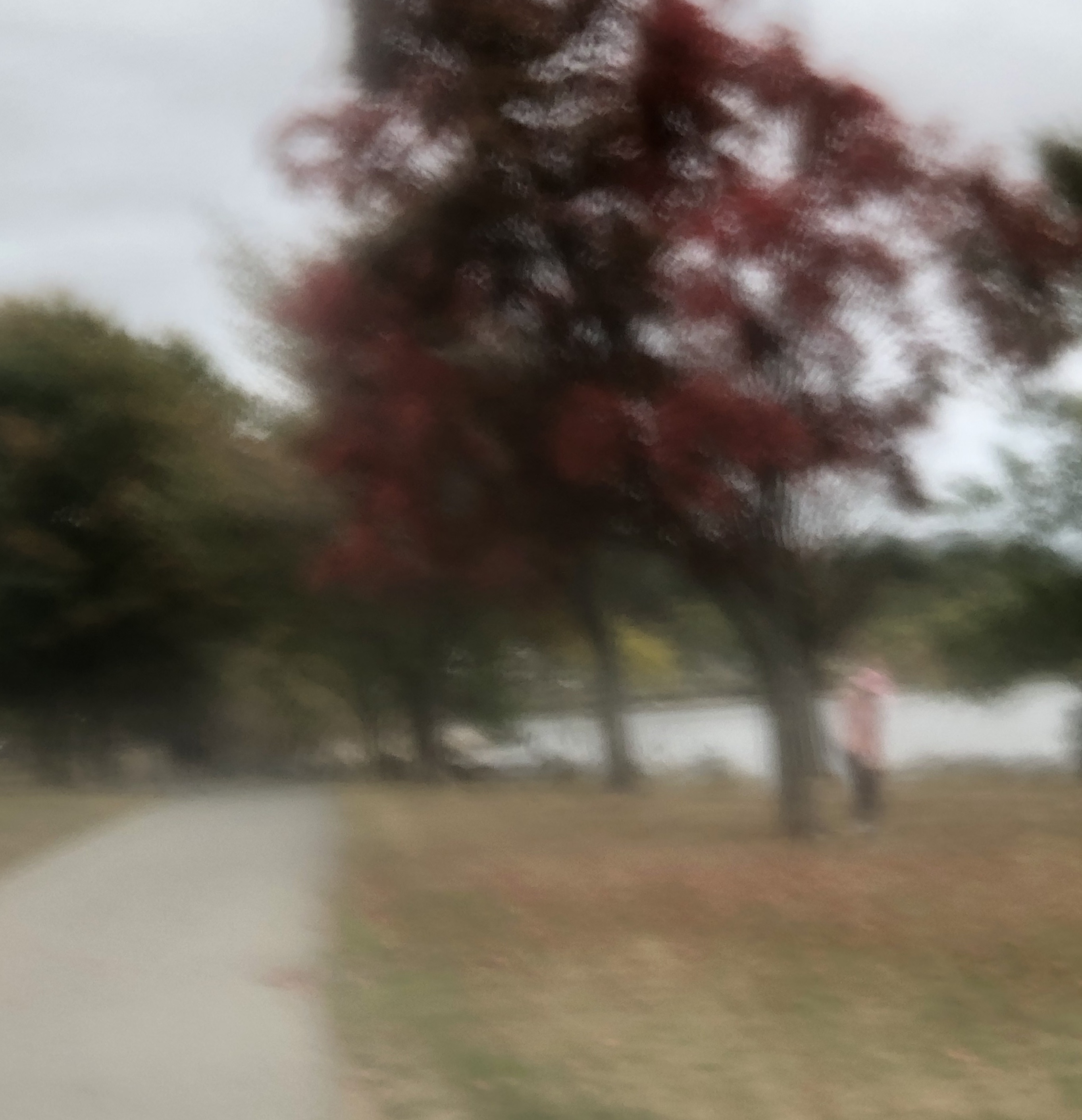
Park Scene II

Brick Wall

Trashcan Illuminated
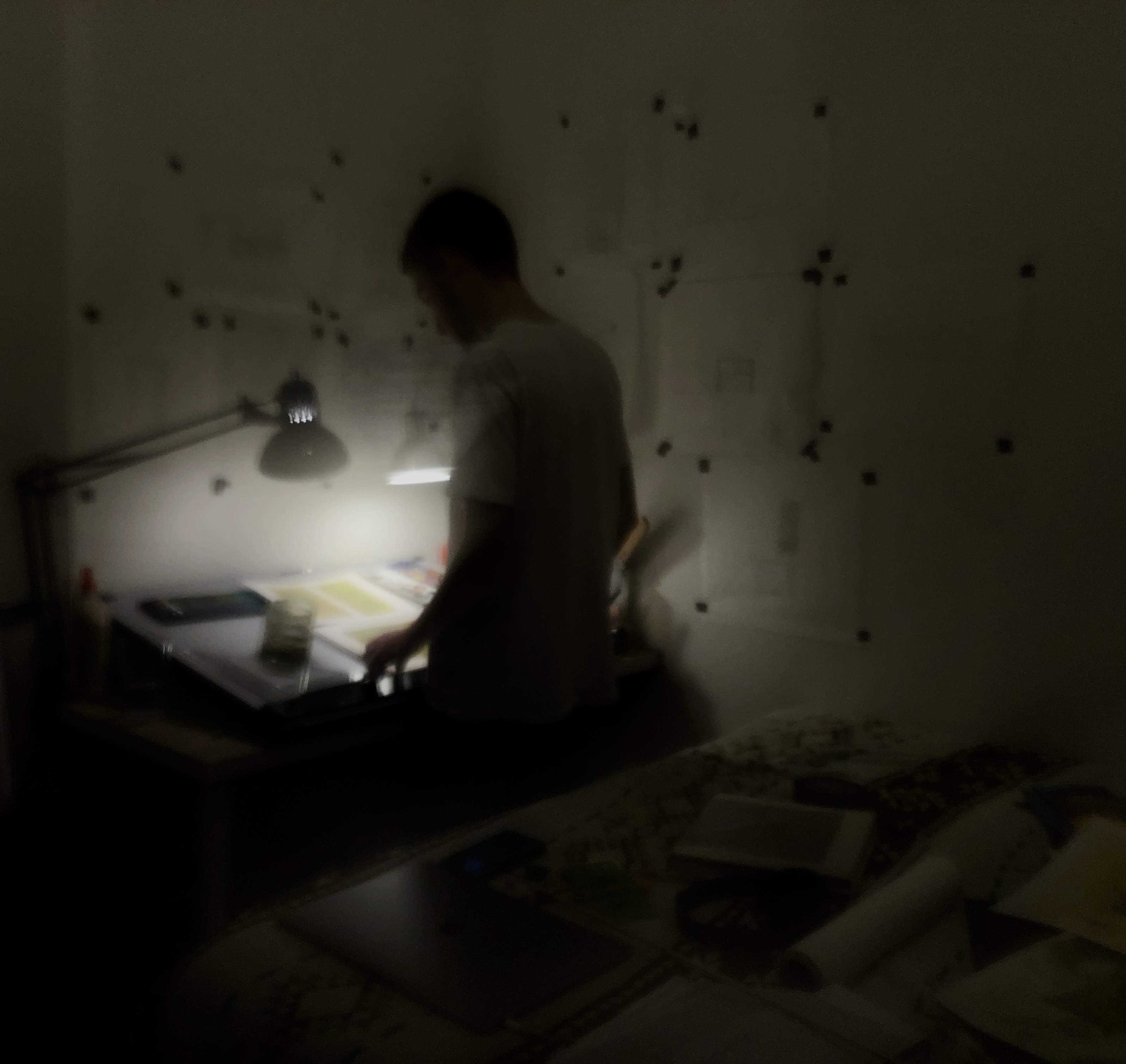
Fred at Work
Roadside Graveyard
Window II
Marsh Scene IV
Providence Skyline II
Toilet
---
VI. Memorabilia’s Gaze: Identity Deteriorated Through Images
Leo Horton

Leo Horton, Do I Know You? (2020)
I
must admit it was difficult finding how to begin this essay. Against my better
judgment I decided to preface it with the image above. The subject is that of a
woman looking at you, neatly framed in a square of blue. Her black hair is
slightly messy and whatever she is wearing is near fully concealed out of frame.
She appears fairly young, though her exact age is largely ambiguous. Likely on
account of its printing, the entire image is blurred and diffused in a slight
layer of grain, but her features yet rise out well defined and barely obscured.
Perhaps you are encouraged to look eye to eye for a moment and confront one
another directly. Maybe you are savoring the space or time between one another,
or perhaps you are in a quick dismissal of your shared connection. Maybe yet
the prolonged eye contact, like straining your eyes in an eternal staring
contest, makes you uncomfortable and encourages you to look elsewhere.
If you were to happen to look away from the image, scroll down, turn the page or lose sight of her for a moment I wonder if, at this point, you might easily conjure her face to mind. It is likely best for my purposes if you can, but if you cannot, it is surely no fault of your own. I would hope however, if you were to see her passing on the street, you would think “I’m not quite sure but I think I saw a picture of that woman in the beginning of an essay I was reading recently”. If you were to call out, expressing this sentiment to her, maybe she would look at you with a gaze slightly like that above.
I include this image, which is generated by a machine learning algorithm in order to appear like a true human face, to express the tragedy of recognition. Every feature was tweaked (on scales such as hair color, age, weight, ethnicity and happiness) in order to visually assemble a hypothetical someone. This subject lacks a voice, an age, a context or a name. The back of their head, the bottoms of their feet, the content of their character and the blades of their shoulders are mere speculation. Their eyes have never seen, their ears have never heard, and their teeth have never bitten. This may leave you with some sense of deception, but it is largely a measure of the power of your recognition senses in tandem with the very nature of photographs. The technology at hand to produce these images is surely not seamless or consistent enough to create a fully believable image-based reality, but it can only be anticipated. This image could very well have been that of a single sock lost in the laundry, a historical event that has come and gone, a house burnt down several months ago or a deceased loved one – that is to mean as a seamless visual signifier for something entirely absent. The relationship between the subject of the image and you, the viewer, is both as shallow as the surface it rests on and as profoundly immeasurable as the interpretation that occurs somewhere hidden just behind your own gaze.
If you were to happen to look away from the image, scroll down, turn the page or lose sight of her for a moment I wonder if, at this point, you might easily conjure her face to mind. It is likely best for my purposes if you can, but if you cannot, it is surely no fault of your own. I would hope however, if you were to see her passing on the street, you would think “I’m not quite sure but I think I saw a picture of that woman in the beginning of an essay I was reading recently”. If you were to call out, expressing this sentiment to her, maybe she would look at you with a gaze slightly like that above.
I include this image, which is generated by a machine learning algorithm in order to appear like a true human face, to express the tragedy of recognition. Every feature was tweaked (on scales such as hair color, age, weight, ethnicity and happiness) in order to visually assemble a hypothetical someone. This subject lacks a voice, an age, a context or a name. The back of their head, the bottoms of their feet, the content of their character and the blades of their shoulders are mere speculation. Their eyes have never seen, their ears have never heard, and their teeth have never bitten. This may leave you with some sense of deception, but it is largely a measure of the power of your recognition senses in tandem with the very nature of photographs. The technology at hand to produce these images is surely not seamless or consistent enough to create a fully believable image-based reality, but it can only be anticipated. This image could very well have been that of a single sock lost in the laundry, a historical event that has come and gone, a house burnt down several months ago or a deceased loved one – that is to mean as a seamless visual signifier for something entirely absent. The relationship between the subject of the image and you, the viewer, is both as shallow as the surface it rests on and as profoundly immeasurable as the interpretation that occurs somewhere hidden just behind your own gaze.

Captioned: Die Viehandlung Katz vor 1938, heute Haushaltswarengeschäft Lisette Wagner.
This next image is
sourced from a book, Bilder aus alt-Wehrheim (Pictures of old-Wehrheim),
my grandmother passed down to me recently. The book is about Wehrheim, a town
in West Germany from which she and her parents, as Jews facing impending persecution
in the rising fascist climate of Nazi Germany, emigrated from in 1937. Two
copies of the book, one which she still owns and one which currently sits in me
and my brother’s living room, were sent to our family of Jewish Immigrants in
America as a small gesture of good faith after the war. It documents, in a
largely objective manner, a collection of everyday scenes from the town taken
over the 1930’s. Within the book (which is entirely in German) there are a
number of family portraits, cows towing fields, flocks of sheep being
shepherded through the streets, sports teams posing before important matches,
military parades being fervently celebrated, and musicians caught paused in
play. Within some images the darker context of the period will shine through,
and a swastika will emerge emblazoned on a banner behind a crowd or a family
member will be photographed with a now-taboo square mustache. All of these
details become momentous in revisional viewings, but at the time the
photographs, which are largely uncredited and assembled long after their taking,
are meant only to document the everyday life of a tight-knit local community.
Each photo was likely taken with the same casualness that any other photograph
might happen to be taken with, and only later, through many lenses and anecdotes,
they are assigned the role of capturing a wildly uncertain period of time within
a location at the precipice of world changing events.
The image’s caption when translated from German reads: “The Cattle Dealership of the Katz Family in 1938, now the home supply store of Lisette Wagner”. Within the rural countryside, in towns like Weirheim, much of the Jewish population worked as cattle dealers and handled beef products exclusively as one of the few industries available to the Semitic minority. The building in the background of the photograph, which is identified as belonging to the Katz family (Katz being my grandmother’s maiden name), was documented a year after it was sold to fund my family’s escape. This structure is the node through which I am linked to this particular image and the source of its relevance to me. Despite that I find myself far less interested in the building in the background and am far more deeply engaged with the two figures recorded in the foreground. Perhaps a mother and son, both hold one another’s hands as they walk down the road. They exist as a beacon of familiarity, forming my mental image of old Wehrheim. They are the figures that populate the corners of history, comparable to the archetypal women and children of the proverbial home front. Captured in this photo only by chance, their two gazes, blurred beyond all recognition, break through decades of history to look at yours now.
The image’s caption when translated from German reads: “The Cattle Dealership of the Katz Family in 1938, now the home supply store of Lisette Wagner”. Within the rural countryside, in towns like Weirheim, much of the Jewish population worked as cattle dealers and handled beef products exclusively as one of the few industries available to the Semitic minority. The building in the background of the photograph, which is identified as belonging to the Katz family (Katz being my grandmother’s maiden name), was documented a year after it was sold to fund my family’s escape. This structure is the node through which I am linked to this particular image and the source of its relevance to me. Despite that I find myself far less interested in the building in the background and am far more deeply engaged with the two figures recorded in the foreground. Perhaps a mother and son, both hold one another’s hands as they walk down the road. They exist as a beacon of familiarity, forming my mental image of old Wehrheim. They are the figures that populate the corners of history, comparable to the archetypal women and children of the proverbial home front. Captured in this photo only by chance, their two gazes, blurred beyond all recognition, break through decades of history to look at yours now.

The history therefore that I tend to look at and that I hope to record is populated by glimpses and glances, squeezed through blurry records to populate the present. I am under the impression that when a gaze meets yours through an image, a subject compels you to try and recognize. This is an image of a woman and child. They walk hand in hand through the street. Behind their head is my family’s symbol of forfeiture. A year after the photo is taken Germany marches into the throws of war. Eight years later it surrenders. Like the image at the beginning, these two subjects lack a voice, an age, a context or a name. The turn of their heads after the snapshot, their continued steps down the street, the content of their character and the trials they might face are only mere speculation.
With that in mind I would like to draw these two images, a generated face and a blurry mother and child in the street, into a shared conversation. The lives behind the images, and the richness of their anticipated stories, are not in any way contingent on the quality with which they are recorded in, but on some unclear sense of proximity to an embodied reality. The first image is far clearer, but the second one is far richer. In a general sense it is real images like that taken in Wehrheim, and a thousand more like it, which are used to shape the features of a generated image like Do I Know You? This pair is in origins and reality nothing alike, yet through vastly different methods they arrive to us with the same familiar gaze. With the eventual turn of a page, the snap of a camera or the closure of a window one disappears, and another turns the corner and walks on to its own out-of-frame finale.
Everyone on all sides of the equation of gazes are merely speculating, and what we know of each subject becomes a taciturn semblance of understanding – grasping for familiarity in faces we may have known.With this general concept in mind, I’d like to explain what makes both of these images so valuable to me and my work; the uncertainty. There is a great uncertainty in a vision of the past that is more closely aligned with our model of the future; one reminiscent of slippery steppingstones in a vast, foggy ocean. Images, as methods of documentary, serve to map the world we can’t quite make visible. Gazes, like the beams of a lighthouse, sear from the past into the future to remind us these stormy seas are populated by an inconceivable milieu of potential experiences just like those around us. Some could be reminders, and others could be mirages. They are recorded, through mere glimpses, in a boundless amount of memorabilia. Memorabilia that is hopelessly distorted in translation and shaped by its linkage to our eventual sight. In short, perception mediated through a series of instruments can only deteriorate and spit out that which we can only haste to recognize.
---
VII. Conclusion

Untitled, Generated Image (2020)
I guess, at the end of this all, I’ll conclude all this with some brief context. I am currently studying in Providence, Rhode Island. 19 years old. I am in quarantine from Covid-19, which has troubled my nation for many months now. My school is on my computer. The world is both undeniably bizarre and unconsolably mundane. The photos taken here are likely a response to that, and are sourced from a variety of projects, essays, ideas and concepts, of which there are many more. They all contribute and revolve around the subject of my current passion and the current conditions of my life.
That is all I suppose. Special thanks to my excellent documentary photography professor, Carl Fuldner, who compelled me to compile this and think further on these ideas throughout his course.
Further thanks to those shown in these images, who allowed me to depict them within their homes during these wild times:
Grady Sumrall,
Ariel Dong,
Frederick Horton,
Nate Krohn,
Angie Pei
That is all I suppose. Special thanks to my excellent documentary photography professor, Carl Fuldner, who compelled me to compile this and think further on these ideas throughout his course.
Further thanks to those shown in these images, who allowed me to depict them within their homes during these wild times:
Grady Sumrall,
Ariel Dong,
Frederick Horton,
Nate Krohn,
Angie Pei
:)
